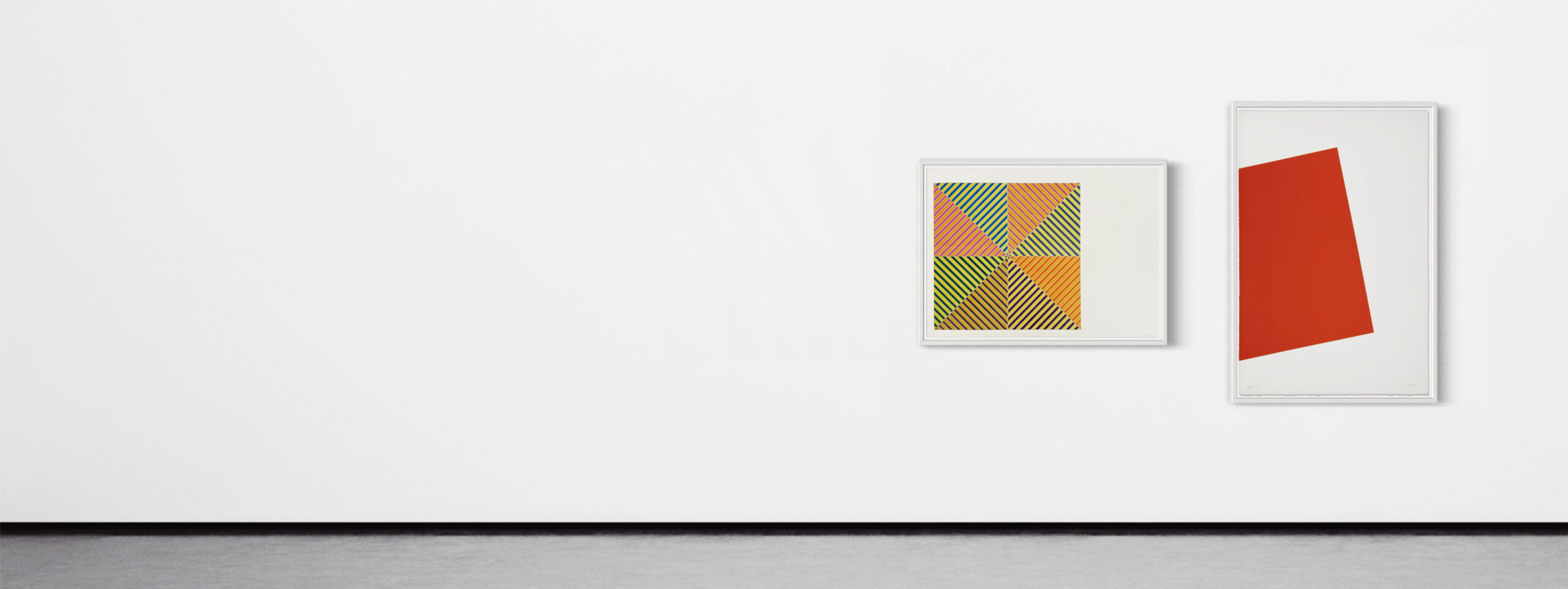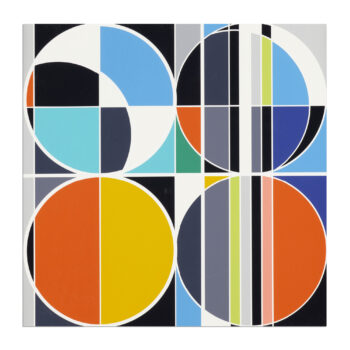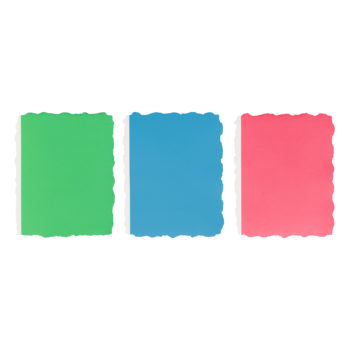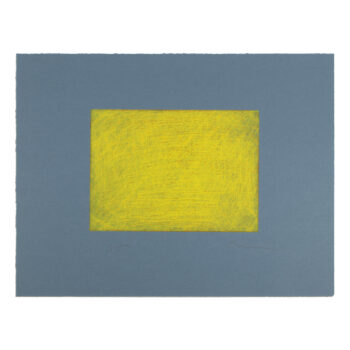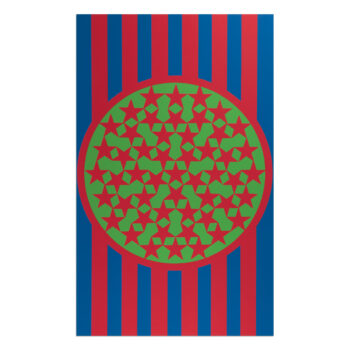What is geometric abstract art?
Geometric abstract art is a pivotal movement within the broader realm of modern art, characterized by its stark use of geometric forms and vibrant exploration of color and composition. Emerging in the early 20th century, this style is defined by its reduction of visual components to simple geometric elements and the abstraction of natural forms into structured, often symmetrical configurations. It stands in contrast to the emotionally charged movements of expressionism, focusing instead on intellectual rigor and a disciplined adherence to formal structure. Geometric art distills the complexities of reality into minimalist forms, aiming to evoke a range of responses through the purity of shape and line.
The movement draws on several intellectual traditions, including mathematics and philosophy, influencing its precision and methodical approach to composition. This form of abstraction is associated with a variety of cultural movements but is particularly noted for its development alongside modernist ideas, which embraced technological advancement and sought new ways to communicate the changing realities of the 20th century. Geometric abstract art is not just a style but an artistic endeavor to represent the world through a lens of geometric reduction and abstraction, making it a unique blend of art, science, and philosophy.
-
Sol LeWitt – Isometric Figures I
3.900,00 € -
François Morellet, Trames Portfolio
8.000,00 € -
Jorinde Voigt – Grüne Treppe
8.500,00 € -
Imi Knoebel, Gelbe Fahne
2.800,00 € -
Rupprecht Geiger – Black on Blue
4.400,00 € -
-
Günter Fruhtrunk, Orgelpunkt
950,00 € -
-
Daniel Buren, Untitled (Leporello)
2.400,00 € -
Sarah Morris, Rings
1.700,00 € -
Wolfgang Tillmans, Speedmaster #2
4.400,00 € -
Günther Uecker – Lithograph from Nagelbuch
1.900,00 € -
Sol LeWitt – Isometric Figures IV
3.900,00 € -
Rupprecht Geiger, Red on Violet
1.700,00 € -
Richard Anuszkiewicz – 6 Seritypien
7.600,00 € -
Günter Fruhtrunk, Schwarz-Grünes Kontinuum
1.000,00 € -
Sarah Morris, Total Lunar Eclipse
2.600,00 € -
François Morellet, Untitled
1.300,00 € -
Rupprecht Geiger, Violet on Warm Red
1.700,00 € -
Rupprecht Geiger, Green on Orange
4.400,00 € -
Rupprecht Geiger, Yellow on Red
2.200,00 € -
Rupprecht Geiger, Yellow on Orange
2.200,00 € -
Sarah Morris, London
1.200,00 € -
Robert Mangold, Arabesque I
3.000,00 € -
Brice Marden, Etching for Parkett
6.500,00 € -
Sarah Morris, Deviancy is the Essence
3.400,00 € -
Dan Flavin, Untitled (Triptych)
3.500,00 € -
-
Arnulf Rainer, Gelbes Meer
3.600,00 € -
Carmen Herrera, Untitled (NRW)
9.800,00 € -
Ellsworth Kelly – Die Welt
3.400,00 € -
Ellsworth Kelly, Small Black Curve
13.000,00 € -
-
Dan Flavin, Projects 1963-1995
1.900,00 € -
Ellsworth Kelly, Braunwald
12.000,00 € -
Günther Uecker, Untitled (from Nagelbuch)
1.900,00 € -
Gert & Uwe Tobias, Untitled
1.200,00 € -
Robert Indiana – Banner
1.000,00 € -
Rupprecht Geiger, Cold Reds on Warm Reds
1.700,00 € -
-
Günther Uecker, Prägedruck (from Nagelbuch)
2.400,00 € -
Günther Förg, Coda
5.500,00 € -
Sarah Morris, Sony (Los Angeles)
2.200,00 € -
Sarah Morris, Taurus (Origami)
2.200,00 € -
Carmen Herrera, Rojo y Negro
9.000,00 € -
Fred Sandback, Untitled (1979.03)
3.800,00 € -
-
Rupprecht Geiger, Black on Different Reds
1.700,00 € -
Günter Fruhtrunk, Farbbewegungen
5.400,00 €
Geometric art and prints
The role of printmaking in geometric abstraction cannot be overstated. The creation of limited edition prints has been a crucial medium for disseminating the principles of geometric art. The precision and repeatability of printmaking techniques like screen prints, lithographs, and etchings are ideally suited to the needs of geometric abstraction. These methods allow artists to experiment with color variations and complex patterns without sacrificing the exactitude required by geometric compositions. Moreover, print creation has enabled geometric abstract artists to produce artworks in series, offering variations on a theme while maintaining a cohesive aesthetic. This is particularly effective in geometric abstraction, where the subtle changes in form or color between prints can offer new visual experiences within the same conceptual framework.
One of the leading abstract geometric artists, Frank Stella identified himself as a peintre-graveur, a term that underscores his dual mastery as a painter and printmaker. He viewed his printmaking as a parallel and equally important facet of his artistic practice, often using it to further explore and resolve formal concerns initially presented in his paintings. This interplay between painting and print was a defining characteristic of his oeuvre, where insights gained in one form directly influenced and enriched the other.
Similarly, Donald Judd, a pioneer of Minimalism, shifted his focus entirely away from painting to dedicate himself exclusively to sculpture and printmaking. In addition to exploring form and symmetry in his three-dimensional objects, Judd used his prints to experiment with color. This shift highlighted his interest in the spatial and conceptual potentials of creating objects and prints, emphasizing the seamless integration of color and form that became central to his minimalist aesthetic.
Limited edition prints, have played a significant role in making celebrated geometric abstract artworks accessible to a broader audience. By producing multiple originals, artists have been able to reach more viewers and collectors, further establishing geometric abstraction as a central mode of modern art. These prints are often prized for their meticulous craftsmanship and the ability to hold precise, clean lines and vibrant colors that are so characteristic of the genre.

Artists who explore geometric art
Among the luminaries of geometric abstract art, figures such as Ellsworth Kelly, Carmen Herrera, Günter Fruhtrunk, Sol LeWitt, and Sarah Morris stand out for their distinctive contributions. Ellsworth Kelly is celebrated for his bold monochromes, defined minimalistic shapes and the spatial relationship between forms and background. His artworks challenge the viewer’s perception of depth and color interaction, making him a pivotal figure in the exploration of geometric abstraction.
Carmen Herrera, although lesser-known for much of her career, has gained recognition for her precise geometric paintings that explore the interaction between two colors, often using asymmetrical compositions that seem to defy the boundaries of the canvas. Her paintings and prints exemplify the meticulous nature and impactful simplicity of geometric abstraction.
Günter Fruhtrunk, a key figure in post-war European abstraction, infused geometric painting with rhythmic precision and optical intensity. Drawing on Constructivist and Op Art influences, he developed a distinct visual language of diagonal stripes and vibrant color contrasts that energized the flat surface. His work bridged rigorous structure with perceptual dynamism, marking a unique contribution to geometric abstraction in both painting and printmaking.
Sol LeWitt’s contributions to geometric abstraction lie in his conceptual approach to art-making. His wall drawings, prints and structures use a set of guidelines executed by others, emphasizing the idea over the craftsmanship. This method was radical in demonstrating the separation between conception and execution in the art process.
Lastly, Sarah Morris is known for her large-scale artworks that reflect architectural and cityscape motifs through a geometric lens. Her use of bright, often contrasting colors and engaging patterns speaks to the dynamic nature of urban life and contemporary society’s complexities.
Together, these artists illustrate the depth and diversity of geometric art, each bringing their unique perspective to the interplay between color, form, and space. Their collective work has not only advanced the field of geometric abstraction but also influenced the broader trajectory of modern and contemporary art.
5 Important geometric art movements
Geometric abstract art is intimately linked with several key art movements that emphasized abstraction, form, and the reduction of natural figures into geometric structures. Among these movements, Cubism, Constructivism, De Stijl, Minimalism, Op Art, and Conceptual Art stand out for their influential contributions to the development and dissemination of geometric abstraction.
Cubism, pioneered by Pablo Picasso and Georges Braque in the early 20th century, is one of the earliest movements that deconstructed natural forms into geometric shapes. Cubism fragmented the subject matter, typically through multiple perspectives, to create an artwork that challenged traditional depictions of dimension and space. This exploration opened the door for more radical geometric interpretations of reality.
Constructivism, emerging in Russia after the Bolshevik Revolution, pushed geometric abstraction into the realm of three-dimensional space. Artists like Vladimir Tatlin and Alexander Rodchenko used industrial materials to create abstract sculptures and installations that served both aesthetic and practical purposes, reflecting the utopian ideals of the new Soviet society.
De Stijl, a Dutch movement led by Piet Mondrian and Theo van Doesburg, emphasized pure abstraction and universality by reducing artwork to the basics of horizontal and vertical lines and primary colors. De Stijl’s aesthetic focused on achieving harmony and balance through the use of grid-based compositions and limited color palettes.
Minimalism, which gained prominence in the 1960s, stripped down the artwork to its essential forms and colors. Artists like Frank Stella and Donald Judd focused on simplicity and objectivity, often creating large-scale artworks that emphasized the physicality of the artwork without any representational content.
Op Art, notably practiced by artists like Victor Vasarely and Bridget Riley, used geometric patterns to create optical illusions that suggest movement and vibrating effects. This movement explored the dynamic potentials of geometric forms to engage and manipulate the viewer’s perception directly.
Lastly, Conceptual Art, particularly in the work of artists like Sol LeWitt and Daniel Buren, emphasized the ideas behind the artworks over their aesthetic manifestation. Sol LeWitt’s wall drawings and structures, and Daniel Buren’s site-specific installations, used geometric patterns to explore and express concepts about space, context, and the viewer’s experience.
Buy geometric abstract art online. Catering art collectors from around the globe, MLTPL focusses on the specific needs of online buyers: transparent pricing, accurate condition reports, professional packaging and quick shipping.
MLTPL ships worldwide. We focus on professional packaging and fully traceable shipping. Where possible, we ship our geometric abstract prints flat between fiberboards and two layers of solid cardboard. We aim to dispatch in under 5 days.
All shipped fine art prints are covered by our door-to-door transport insurance. In the unlikely event of physical damage or loss, the geometric abstract artwork will therefore be fully insured.
When buying geometric abstract art online, the artwork’s condition and its truthful description are key. We follow a rigorous standard when selecting new artworks for our collector base, whilst providing accurate condition reports and high-resolution images.
